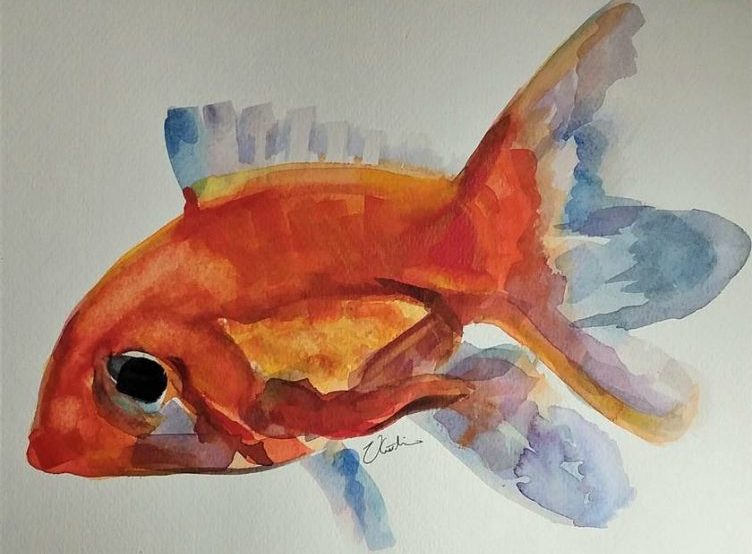Along with quality photographs, the written content of your listing is a significant driver in persuading the customer to make that purchase.
A good listing accurately portrays the value of your item, highlighting why it is desirable and worthy of purchase. As well as creating desire, your words and images need to make a complete stranger feel comfortable and confident about buying your product. Good written descriptions in particular are vitally important for visually-impaired shoppers, who might use screen readers to access content.
Creative people often undersell our work – we can be too humble for our own good or feel uncomfortable speaking highly of our own creations. It can also be easy to leave out information that we take for granted – it might seem obvious, or unimportant. Sometimes we even leave out practical details that the customer needs to feel confident about buying.
The way you describe your product must be consistent with what you are offering. Your description sets the customer’s expectations of what they will receive, so it’s important to be accurate. If you exaggerate, over-promise, or omit important details, you may make the sale, but you risk a disappointed customer. Conversely, a bare-bones description can seem abrupt and off putting.
The words you choose for your description, title, and keywords also have a technical purpose: they are used on Felt for the search function. This means it’s important to put yourself in your customer’s shoes and consider what search terms they might use to find your product. Again, accuracy is key – when your product appears in search results, you want it to be relevant.
Here are some tips to think about when writing the content of your listing.
Title
Less is more when it comes to a listing title. Keep it succinct and on point – every word should be there for a reason.

Consider this watercolour painting by Vicky Curtin at mycoveart.felt.co.nz. Some title ideas might be:
- Goldfish painting
- Original watercolour painting
- Goldfish watercolour painting
- Handpainted Goldfish watercolour
- Original watercolour painting of a goldfish
- Watercolour on paper: Goldfish (original)
Each of these options is valid and accurate, but each draws attention to different elements or emphasises different selling points.
You might also think about other listing titles in your shop. When viewed together, are they consistent? Do your titles differentiate effectively between products?
Description
Be specific and detailed in your product description. Your customer can’t touch or pick up this item, turn it around, or feel its weight or texture. If it has a fragrance, they can’t smell it. In the case of someone visually-impaired, they may be entirely reliant on your written description. The first step in writing a good description is making sure you’ve covered the physical and aesthetic attributes, uses, and practical details of your product.
The next step is highlighting your unique selling points: what are the special features of this product? Why should a customer choose your product over a similar alternative? Prospective buyers are probably not experts in your craft, so talk about why the nature of production or creative process adds value. Note that if you use technical terms, it can be helpful to briefly explain them too.
Last but not least, part of the value of an item is in its story, so make sure you’re telling that. As well as describing the item itself, give some detail about your techniques, creative process, and inspiration. Everybody likes to be able to talk knowledgeably about something they’ve chosen to buy – you are giving your customer that story.
Writing prompts for a good product description:
- What the item is Be specific and detailed
- Aesthetic attributes Colours and any options
- Dimensions and/or size options
- What it is made of For example, “wood”,“cedar”, “linen”, “recycled bicycle inner tubes”…
- Why it is uniquely valuable For example, “my own design”, “one-off”, “limited edition”…
- How it was made Processes and techniques, for example “hand-woven”, “laser-cut”…
- Where it was made For example, “Designed and built in our home workshop in sunny Kerikeri…”
- Where or how it can be used For example, “perfect for the lounge”, “a kitchen essential”…
- Why it was made The inspiration behind it, where the idea came from
Keywords
As well as the written description of your product, Felt allows ten keywords or tags for each listing, which are used by the search function.
Keywords are words customers might use to search for your product. As well as the type of product, keywords might include aesthetics, materials, or the functions, properties, or uses of your product. If your product has an alternative name or if there’s a common typo or misspelling of its name, include that as a keyword.
Consider:
- Colours What is the dominant colour of your product? Does it have secondary colours?
- Style Fun, elegant, retro, emo, classy, casual, sporty…
- Texture or pattern Rough, smooth, soft or grainy… stripy, geometric, floral…
- Materials Wool, paper, linen, wood, metal…
- Properties Warm, strong, durable, upcycled…
- Size/volume/quantity
- Potential uses
- Occasions Valentine’s Day, house-warming, Mother’s Day, wedding, or 21st…
- Who would it appeal to? Gardeners? Sports fans? Movie buffs? Kids?
To make the most of your keyword allowance, think carefully about who your customer is and what they might search for, and use a selection of ideas from the list above.
Questions or suggestions about writing a good product description? Drop us a line.






thank you Jason, as a new person who feels weird describing something that is made by me in the flow of a creativity attach 🙂 I find it super useful
Thanks Yulia, keep it up!
As always, Jason, well thought out and very useful articles. Keep up the good work! Kind regards, Richard.
Thanks Richard, glad you’re finding them useful.